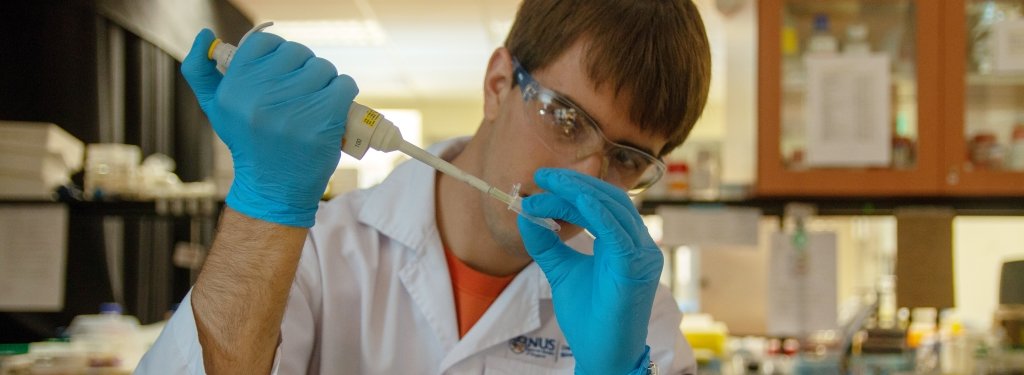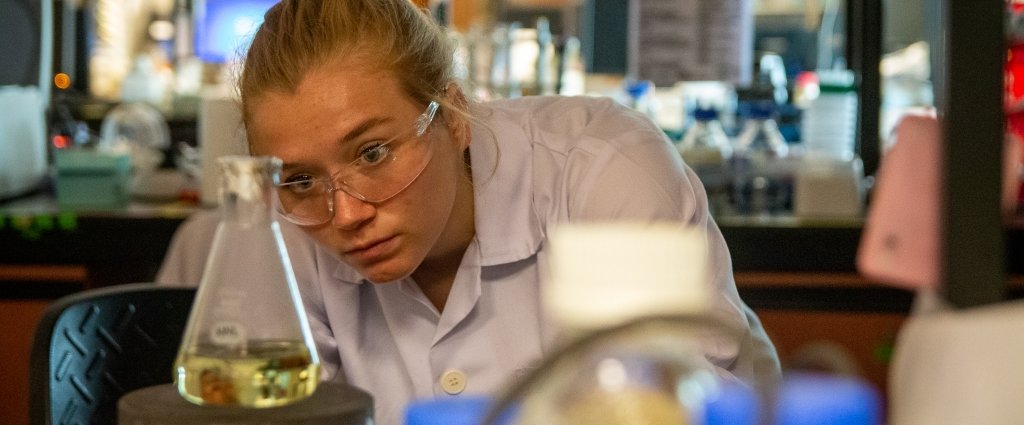This International Research Experience for Students (IRES) program focuses on developing interdisciplinary teams to meet the global challenges of health research.
Specifically, the students are funded by the National Science Foundation (NSF) to look at biomedical applications of nanotechnology for detecting and treating viral diseases. The students in the program, who hail from several different universities, gathered at Michigan Technological University for an orientation and will spend eight weeks at the National University of Singapore (NUS) this June and July.

Caryn Heldt, James and Lorna Mack Chair in Bioengineering and associate professor of chemical engineering at Michigan Tech, is the lead researcher on the IRES Singapore project. She says the program's goal is three-fold: to give students lab experience (going way beyond cleaning glassware), to learn techniques to improve interdisciplinary collaboration and to sharpen their communication skills.
"I hope the students learn to be better scientists and better communicators of that science," Heldt says. "The projects that have been developed for this group of students will push them to think of viruses in a new light as small particles that act in interesting ways. They will also observe how viruses interact with gold nanoparticles, and I hope they learn to appreciate biomedical nanotechnology in an interdisciplinary way."
Interdisciplinary research needs solid communication skills
People pursuing global research that crosses disciplines and cultures all agree: the hardest part of the work is learning to speak in a common language. Whether it's the technical notations of specific fields or navigating lingual trip-ups, communication is best when it's simple and clear, even if the ideas are complex. To do that successfully, however, takes practice and reflection.
That's why it's built into the IRES Singapore program. The students run shared Twitter and Instagram accounts (@ires_singapore), and a communications student joins the crew for the first two weeks of their stay to document the project.
"Building communication components into research projects like this helps us combat the perception that science and communication should remain separate entities. I am so excited to see these students get invested in showing the world their research."
Map virus proteins
The students are working on three projects, all related to viral disease detection but varying from basic science to applied engineering. The first project, overseen by Ganesh Anand, associate professor of biological science of NUS, focuses on the fundamental biochemistry of virus proteins and their interactions with other particles that can alter their biochemical behavior.
"Through the movement of water and different molecular interactions, our project studies structural changes and clusters of viruses with compounds called an osmolytes."
Under Heldt's and Anand's guidance, the students will map the surface proteins that encase viruses. They will use mass spectrometry to track how the viral particles interact with antibodies and osmolytes, which are compounds that deep-sea fish use to pressurize their bodies using osmosis. Osmolytes tend to make viruses sticky, causing them to clump together. A better understanding of the basics of these interactions can improve techniques engineered to make more efficient and effective virus detection technology and vaccines.
"It’s always enlightening to look into a different discipline, but now we’re also going to a different country and culture, which should give a completely fresh perspective on how I personally think about science."
Gold nanoparticles show virus concentrations
To diagnose a disease, a virus needs to be detected in a sample, but it's the ultimate needle in a haystack. While a pregnancy test measures key biomarkers in urine within a range of one to two nanograms in a milliliter, infectious viruses can be 10,000 times less concentrated, making it difficult to detect them within a drop of blood or saliva. The second project, overseen by James Kah, assistant professor at NUS, focuses on using spheres and rods of gold nanoparticles to detect viruses—and perhaps even treat them.

"If there’s such a thing as cool chemistry, this is it. Gold nanoparticles are enabling us to detect viruses of different shapes and sizes using the same method. This research could make the screening of blood donations faster and more comprehensive than ever before."
The technique focuses on positive-strand RNA viruses like the Dengue and Chikungunya viruses because the gold particles gather around the viruses making them seem larger. If a virus is present, the aggregating gold nanoparticles changes the sample's color, which is easily seen with the naked eye and could speed up disease diagnosis.
"Gold nanoparticle size increase reminds me of a sunset over Lake Superior. The gold nanoparticles are the sun that start above the lake displaying a red-ish pink color and as the sun begins to set behind the lake, the color changes to a deep purple. When the sun is set, only the crisp blue color of Lake Superior is left behind."
Pointed stars make virus detection easier
The final project, overseen by Justin (C.J.) Chu Jang Hann, associate professor of microbiology and immunology at NUS, examines how different nanostructures interact with proteins and cells. Specifically, pointed star-shaped gold nanoparticles aggregate around viruses and create spiky clusters that make it easier to detect. That means there would be less virus needed in a sample, which could speed up diagnosis and perhaps offer methods for drug delivery and treatment within affected cells.
"It’s like our current technology is us playing catch, but we’re changing the game so that the ball and glove are Velcro, and now they’re easier to grab."
Michigan Technological University is an R1 public research university founded in 1885 in Houghton, and is home to nearly 7,500 students from more than 60 countries around the world. Consistently ranked among the best universities in the country for return on investment, Michigan's flagship technological university offers more than 185 undergraduate and graduate degree programs in science and technology, engineering, computing, forestry, business, health professions, humanities, mathematics, social sciences, and the arts. The rural campus is situated just miles from Lake Superior in Michigan's Upper Peninsula, offering year-round opportunities for outdoor adventure.






Comments